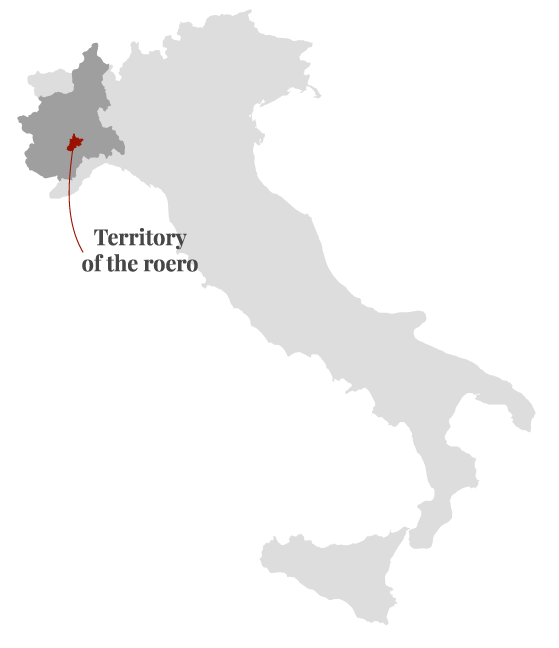Located on the left bank of the river Tanaro, in the splendid setting of steep hills with yellow-ocher soils, Roero is a magnificent multi-shaped territory, known for its ancient and renowned wine tradition, which express itself at the best in the local wines.
An aristocratic land in all respects: in the name (which derives from the family that in the Middle Ages dominated these territories for several centuries) and in the landscape, rich in towers and castles.
These lands are extremely various: in rapid succession, the wild and uncontaminated beauty of the “Rocche” (geological phenomenon of erosion that has given life to canyons over 100 meters deep) alternates with the ordered geometries of the vineyards, the gracefulness of the orchards and the grandeur of centuries-old chestnut trees.
Loosing oneself in these spectacular landscapes is a suggestive and unforgettable experience, a bit like abandoning oneself to distant memories, letting oneself be surprised by the sensation that time and man still have here a profound bond with the seasons and the land.

Wines of Roero: a perfect wine from a perfect land
The geological profile of Roero, more recent with respect to that of Langa, originates from the dismantling and mixing of overlapping layers of different origins, deposited in remote times on the crystalline bottom of an ancient inland sea.
In our agricultural lands, all located at the top of the hills and therefore extremely suitable to viticulture, prevails the sand mixed with sandstone, a sedimentary rock of marine origin, rich in limestone and clay.
The richness of these minerals, together with calcium, phosphorus, potassium and other microelements, contributes to a perfect cultivation of the vine, while the right amount of rains, combined with a particular microclimate, gives life to the primary characteristics of the excellent wines of Roero.
It is a land that only in recent times (if compared to the most famous Langa), is looking for and finding its dimension.
An area set between the provinces of Turin, Cuneo, Asti, bordered to the south and south-east by the left bank of the Tanaro, cut like a scimitar by the middle line of the “Rocche” that shake the landscape with sour and labyrinthine variety, sinking into horrors and gorges of hermits, climbing up to pitches steep like blades, skewing precarious geometries in overhangs, ups and downs, woods, reed beds, the endless ravines of adventure.
Wandering, in Roero, through towers and castles, small churches and museums, vineyards and chestnut groves, crossing fossil shells through the paths that wind up suddenly inside crumbly and compact lands, streaked with red colours, like the peaches of San Michele.
Finding areas of centennial chestnut trees, huge gnarled trunks that tend to the sky their enveloping and strangely exotic arms, like baobabs. To catch their value, to perceive their variety made not only of vines obtained everywhere, torn from the impossible and the improbable, in the spirit of the new health).
On vertiginous vineyards, there are scattered “ciabòt”, rest areas and lookout towers in the past, are now the heraldic keepers of an indissoluble local genius. The ciabòt are modest and do not belong to the art building. They are discreet and they are not even colored. They are dismissed and rustic. But they do not go unnoticed. They are small houses with indigenous names and tied to remote senses. It’s nice to imagine the farmer storing there his tools, resting at the end of the day and observing the blue trails of the sky and the green of life.
SOIL
There is an alternation of two types of soil: a sandy one of marine origin, rich in fossils and poor in limestone and a second one of a gray-bluesh limestone plate, more calcareous and clayey.
CLIMATE
Precipitation in the Roero area is rather low compared to the average in Italy. The proximity to the Alps Mountains ensures important thermal excursions.
GRAPES
Roero is one of the rare areas dedicated both to the cultivation of red grapes and white grapes. In particular, Nebbiolo and Arneis are best expressed in this area, giving life to the two great Roero Docg wines.
